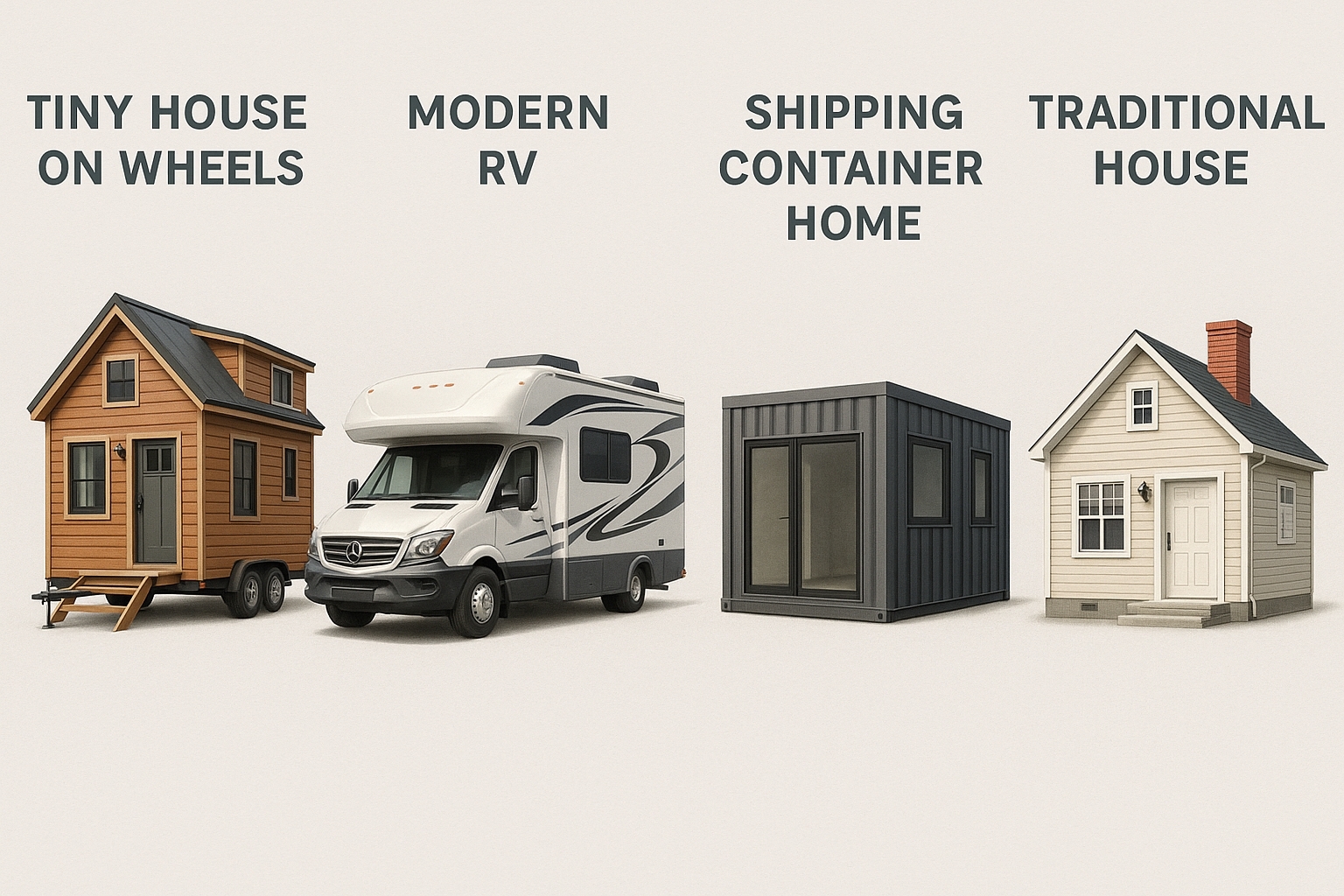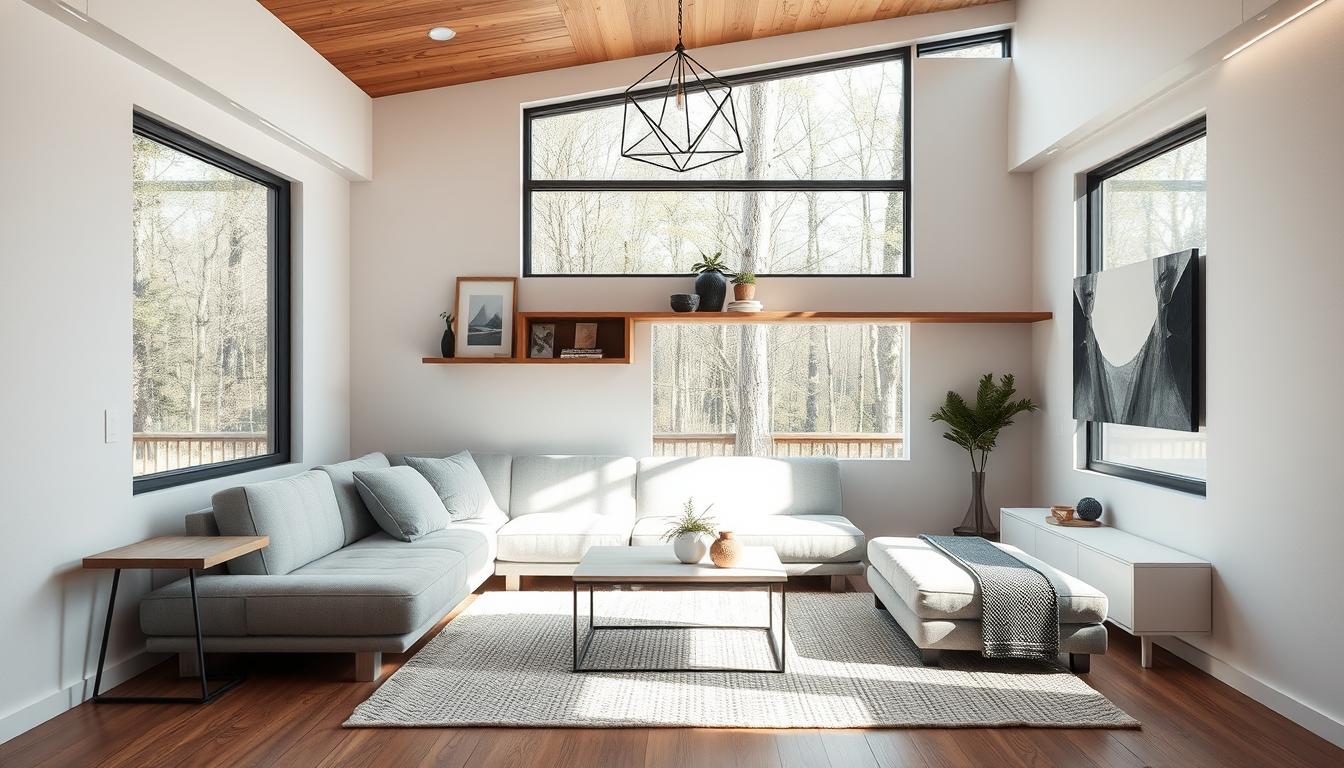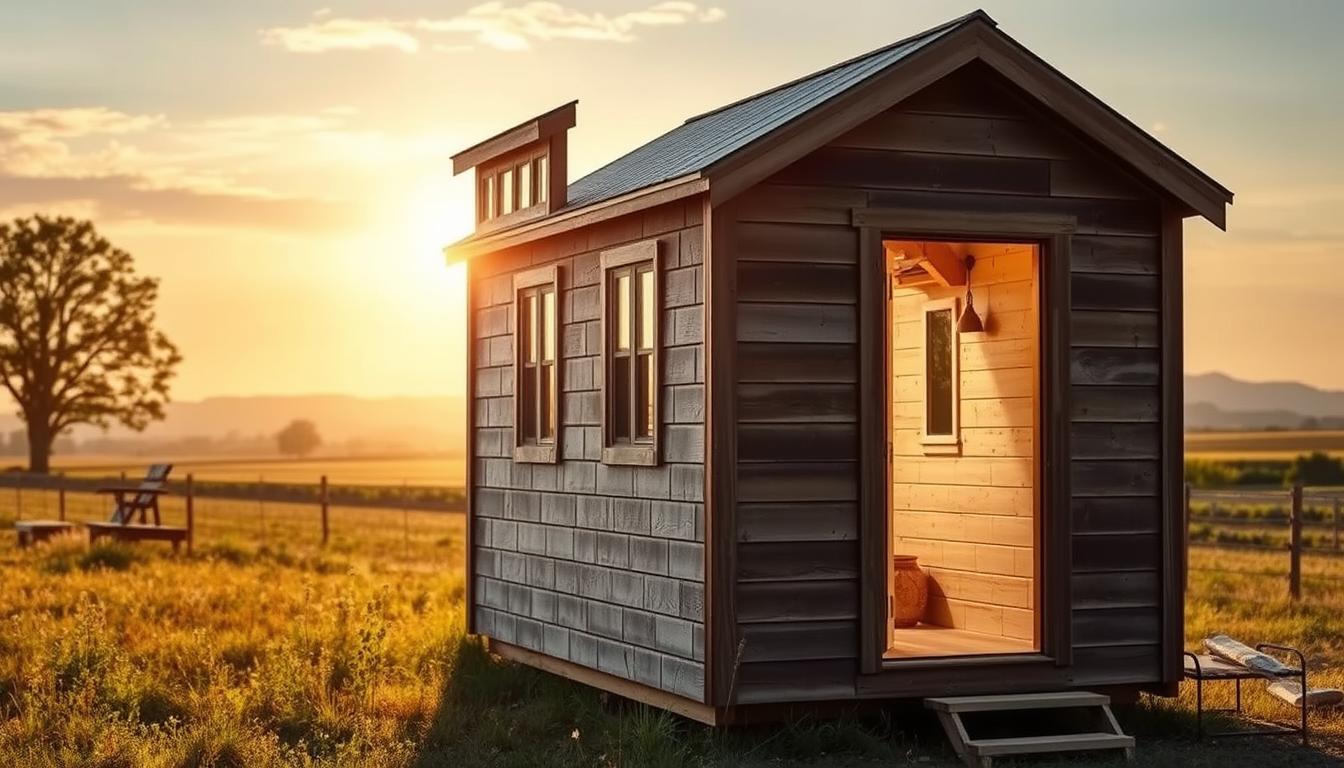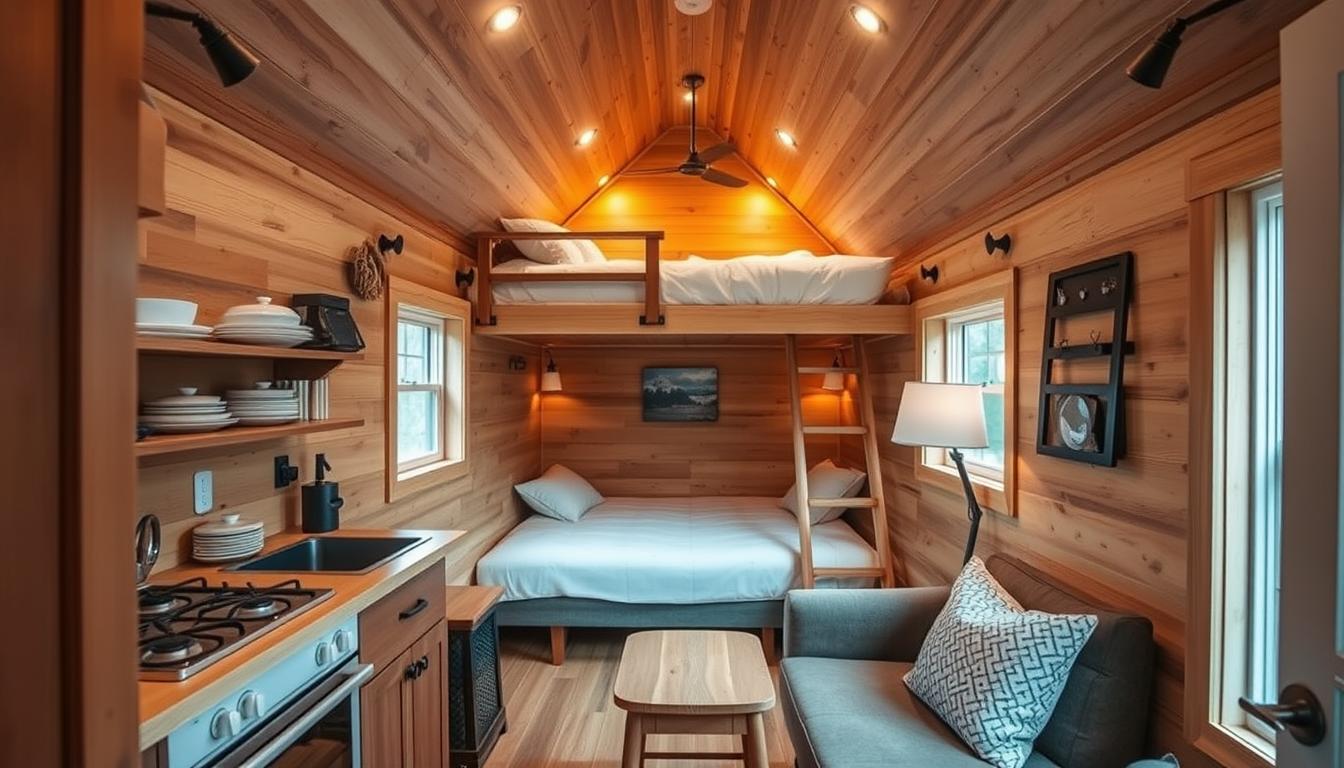What You’ll Learn About Tiny House Trailers
By reading this article, you will learn:
– What a tiny house trailer is and its benefits.
– Considerations and factors when selecting and building on a tiny house trailer.
– Legal and safety guidelines, customization options, maintenance, towing tips, and real-life examples related to tiny house trailers.
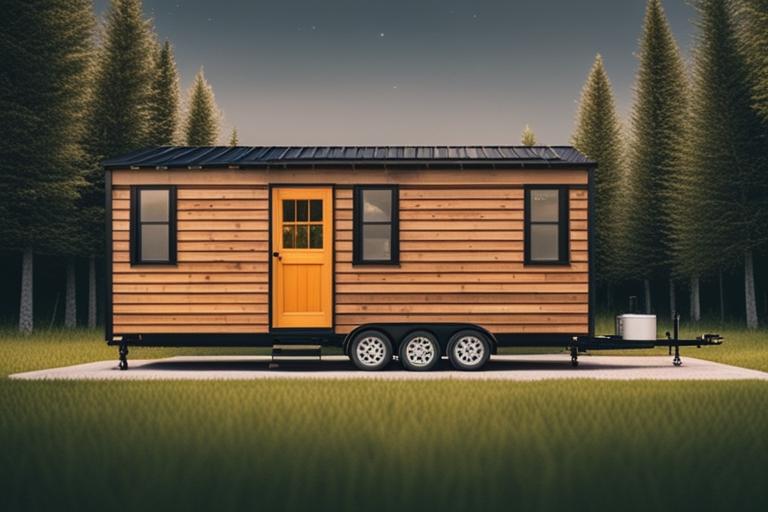
What is a Tiny House Trailer?
A tiny house trailer serves as the foundation for a tiny home, providing mobility and flexibility. Unlike traditional houses, tiny homes are built on trailers, allowing owners to easily move their homes from one location to another. The use of a tiny house trailer offers a unique living experience, combining the comforts of a home with the freedom of mobility.
Benefits of Using a Tiny House Trailer for Your Tiny Home
Using a tiny house trailer for your tiny home offers several advantages. Firstly, it provides the flexibility to relocate your home as needed, whether for a change of scenery or to follow work opportunities. Additionally, the use of a trailer allows for a smaller environmental footprint, promoting a sustainable lifestyle. It also enables homeowners to bypass some of the zoning and building regulations that traditional homes are subject to, offering greater freedom in location choices.
Understanding Tiny House Trailers
Advantages of Choosing a Trailer for Your Tiny House
Selecting a trailer for a tiny house offers numerous advantages. The mobility of a trailer allows individuals to embrace a minimalist and sustainable lifestyle while still enjoying the comforts of home. It also provides the freedom to live off-grid or in remote locations, fostering a deeper connection with nature.
Considerations When Building a Tiny House on a Trailer
When building a tiny house on a trailer, it’s crucial to consider weight distribution, structural integrity, and safety. The unique challenges of building on a mobile foundation require thoughtful planning and construction techniques to ensure a safe and durable living space.
Key Differences Between Tiny House Trailers and Traditional Trailers
Tiny house trailers differ from traditional trailers in their design and functionality, as they are specifically engineered to support the construction and transportation of a tiny home. Unlike conventional trailers, tiny house trailers are built to accommodate the specific needs and weight requirements of a dwelling, often incorporating features such as reinforced framing and integrated anchor points.
Selecting the Right Trailer
Factors to Consider When Selecting a Tiny House Trailer
1. Size and Dimensions
The size and dimensions of the trailer are crucial considerations, as they directly impact the living space and overall design of the tiny home. It’s essential to choose a trailer that aligns with the intended layout and floor plan of the tiny house.
2. Weight Capacity and Distribution
The weight capacity and distribution of the trailer are vital for ensuring safe transportation and structural integrity. Proper weight distribution is necessary to prevent issues such as swaying and instability during towing.
3. Towing Requirements and Compatibility
Understanding the towing requirements and compatibility of the trailer with different vehicles is essential for safe and efficient transportation. Compatibility with towing vehicles and adherence to towing regulations are critical factors to consider.
Types of Trailers Suitable for Tiny Houses
1. Flatbed Trailers
Flatbed trailers offer a versatile foundation for tiny homes, providing ample space for customization and design flexibility. They are well-suited for various tiny house layouts and are compatible with a wide range of towing vehicles.
2. Gooseneck Trailers
Gooseneck trailers provide enhanced stability and weight distribution, making them suitable for larger or multi-level tiny homes. Their unique design allows for a raised section over the towing vehicle, maximizing interior space.
3. Utility Trailers
Utility trailers are a cost-effective option for tiny house construction, offering simplicity and functionality. They are suitable for smaller tiny homes and are often compatible with standard towing vehicles.
4. Custom-built Trailers
Custom-built trailers offer tailored solutions for specific design and layout requirements, allowing for a high degree of personalization. They can be designed to accommodate unique features such as integrated storage solutions or off-grid capabilities.
Building on a Trailer
Technical Considerations for Constructing a Tiny House on a Trailer
1. Weight Distribution and Balancing
Proper weight distribution and balancing are essential for the safety and stability of a tiny house on a trailer. Careful consideration must be given to the placement of heavy components such as appliances and furniture to maintain balance during transportation.
2. Anchoring and Securing the Structure
Anchoring and securing the structure to the trailer are critical for withstanding the forces experienced during transportation. Utilizing robust anchoring systems and structural reinforcements is vital to ensure the integrity of the tiny home.
3. Structural Design and Considerations
The structural design of the tiny house must account for the dynamic forces encountered during transportation. Reinforcements such as cross-bracing and engineered connections are necessary to withstand road vibrations and towing stresses.
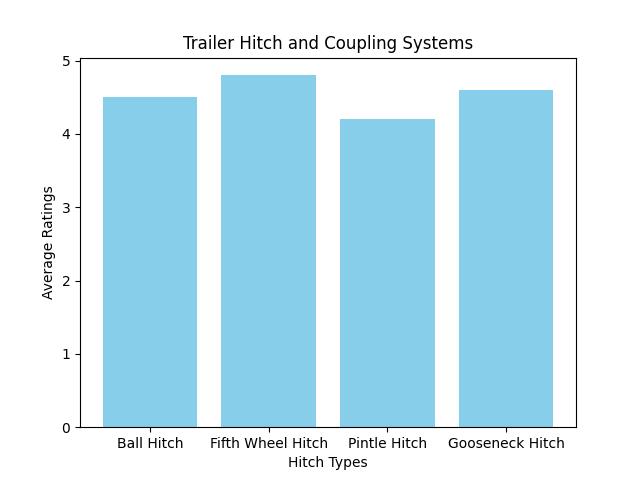
Essential Components for a Tiny House Trailer
1. Trailer Hitch and Coupling Systems
The trailer hitch and coupling systems are integral components that connect the tiny house to the towing vehicle. Ensuring the compatibility and reliability of these systems is essential for safe and secure towing.
2. Undercarriage Support and Bracing
The undercarriage support and bracing play a crucial role in distributing the weight of the tiny house across the trailer frame. Proper bracing and support systems help mitigate stress on the trailer and ensure structural stability.
3. Trailer Wiring and Brake Systems
The trailer wiring and brake systems are essential for safe and legal transportation. Functional lighting, brakes, and electrical systems are imperative for complying with road regulations and ensuring on-road safety.
Legal and Safety Guidelines
Regulations and Codes for Building and Parking a Tiny House on a Trailer
Understanding and adhering to relevant building codes and regulations is essential when constructing a tiny house on a trailer. Compliance with building standards ensures the safety and habitability of the dwelling.
Zoning Laws and Roadworthiness Requirements
Zoning laws and roadworthiness requirements dictate where and how a tiny house on a trailer can be parked and transported. Understanding these regulations is crucial for avoiding legal issues and ensuring a smooth relocation process.
Safety Measures for Stability, Transportation, and Security
Implementing safety measures such as securing the tiny house to the trailer, installing safety restraints, and conducting regular maintenance checks is essential for ensuring the stability, transportation safety, and security of the tiny home.
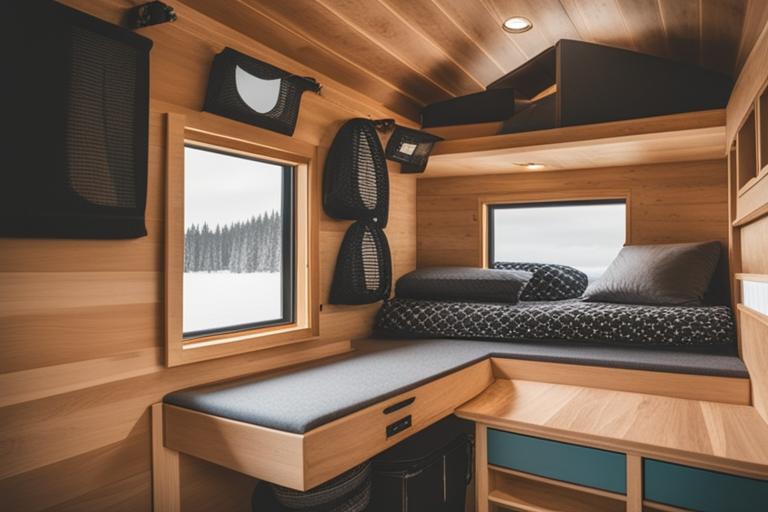
Customization and Design
Design Considerations for Maximizing Space and Functionality
Maximizing space and functionality is a primary consideration when designing a tiny house on a trailer. Thoughtful layout planning and multifunctional design elements are essential for creating a comfortable and efficient living space.
Customization Options for Tiny House Trailers
1. Integrated Storage Solutions
Integrating storage solutions such as built-in cabinets, lofts, and multipurpose furniture maximizes the use of limited space in a tiny house. Customized storage options help maintain a clutter-free living environment.
2. Off-grid Capabilities and Energy Systems
Incorporating off-grid capabilities and energy systems such as solar panels and composting toilets enables sustainable and self-sufficient living in a tiny house. These systems reduce reliance on traditional utilities and enhance the mobility of the home.
3. Exterior Enhancements and Aesthetics
Enhancing the exterior of the tiny house with features such as awnings, outdoor living spaces, and visually appealing finishes adds character and functionality to the dwelling. Thoughtful exterior design contributes to the overall appeal of the tiny home.
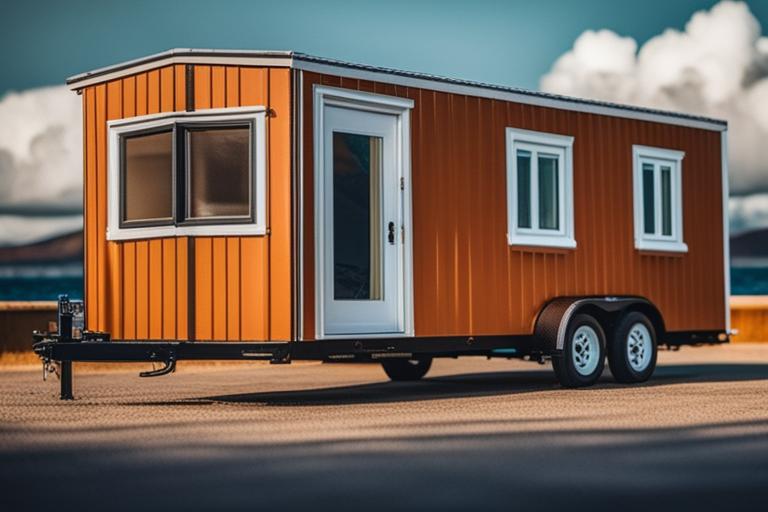
Maintenance and Upkeep
Tips for Maintaining the Trailer’s Structural Integrity
1. Rust Prevention and Corrosion Control
Regularly inspecting the trailer for signs of rust and corrosion and applying appropriate protective coatings are crucial for preserving its structural integrity and longevity.
2. Tire Maintenance and Inspection
Routine tire maintenance, including inflation checks and tread inspections, is essential for safe towing and transportation. Properly maintained tires contribute to overall road safety.
3. Structural Integrity Checks and Repairs
Periodic structural integrity checks and prompt repairs of any damage or wear are vital for ensuring the safety and durability of the tiny house trailer.
Upgrades and Modifications for Improved Performance and Longevity
Implementing upgrades and modifications such as reinforced framing, enhanced suspension systems, and improved towing components can enhance the performance and longevity of the tiny house trailer.
Towing and Transport
Guidelines for Towing a Tiny House Trailer Safely
1. Vehicle Requirements and Considerations
Selecting a towing vehicle with the appropriate towing capacity and compatibility with the trailer is essential for safe and efficient transportation.
2. Weight Distribution and Load Management
Properly distributing the weight and managing the load within the tiny house are critical for maintaining stability and control during towing.
3. Safe Towing Practices and Precautions
Adhering to safe towing practices, including maintaining safe speeds, conducting regular safety checks, and observing road regulations, is imperative for a smooth towing experience.
Transporting the Tiny House to Its Intended Location
1. Road Restrictions and Route Planning
Researching road restrictions and planning the transportation route in advance helps avoid potential obstacles and ensures a safe and efficient relocation process.
2. Permit Requirements and Legal Considerations
Obtaining necessary permits and understanding legal considerations for transporting an oversized load are essential for compliance with transportation regulations.
3. Professional Transport Options and Services
Engaging professional transport options and services, such as specialized towing companies or transport logistics firms, can provide expertise and support for safely relocating a tiny house.
Real-life Examples and Case Studies
Overcoming Zoning Challenges: The Story of Sarah and David
Sarah and David had always dreamed of living in a tiny house, but they faced zoning challenges in their city that made it difficult to find a permanent location for their home. After exploring various options, they decided to build their tiny house on a trailer, allowing them the flexibility to relocate as needed.
By choosing a tiny house trailer, Sarah and David were able to navigate the zoning restrictions while still fulfilling their dream of living simply and sustainably. They found a temporary spot in a friend’s backyard, and when the time came to move, they simply hitched their tiny house to a truck and found a new location without the hassle of selling or relocating a traditional home.
Their experience showcases the practical advantages of using a tiny house trailer, especially for individuals facing zoning or housing restrictions. It also highlights the freedom and mobility that a tiny house on wheels can offer, providing an inspiring example for others in similar situations.
Real-life Examples and Case Studies
Personal Experiences of Living in Tiny Houses on Trailers
Exploring personal experiences of individuals living in tiny houses on trailers provides valuable insights into the practicalities and benefits of this lifestyle.
Success Stories and Lessons Learned from Tiny House Trailer Owners
Learning from the success stories and lessons learned by tiny house trailer owners offers inspiration and guidance for those considering or already living in a tiny home.
Innovative Designs and Applications of Tiny House Trailers
Discovering innovative designs and applications of tiny house trailers showcases the creative possibilities and potential for unique living spaces on wheels.
Resources and Suppliers
Reputable Manufacturers of Tiny House Trailers
Identifying reputable manufacturers of tiny house trailers ensures the quality and reliability of the foundation for a tiny home.
Suppliers of Trailer Accessories and Components
Accessing suppliers of trailer accessories and components provides a range of options for enhancing and customizing the tiny house trailer.
Relevant Building Materials and Resources for Tiny House Construction on Trailers
Sourcing relevant building materials and resources tailored to tiny house construction on trailers facilitates the construction process and ensures compatibility with the trailer foundation.
Conclusion
Key Considerations for Using a Tiny House Trailer
Understanding the key considerations, from selection and construction to transportation and maintenance, is essential for a successful and rewarding experience with a tiny house trailer.
!
Jane Smith is a seasoned architect and sustainable living advocate with over 10 years of experience in designing and constructing small, eco-friendly homes. She holds a Master’s degree in Architecture from the University of California, Berkeley, where she specialized in innovative housing solutions for urban environments. Jane has conducted extensive research on the structural and technical aspects of tiny house trailers, with her work published in leading architectural journals such as Architectural Digest and Dwell.
As a consultant, Jane has worked closely with individuals and communities looking to embrace the tiny house movement, providing them with expert guidance on trailer selection, construction considerations, and legal regulations. Her expertise in zoning laws and roadworthiness requirements has been instrumental in helping clients navigate the complexities of living in a tiny home on wheels. Jane’s practical insights and real-world examples have made her a sought-after speaker at sustainability conferences and workshops, where she shares her knowledge and passion for tiny house living.





